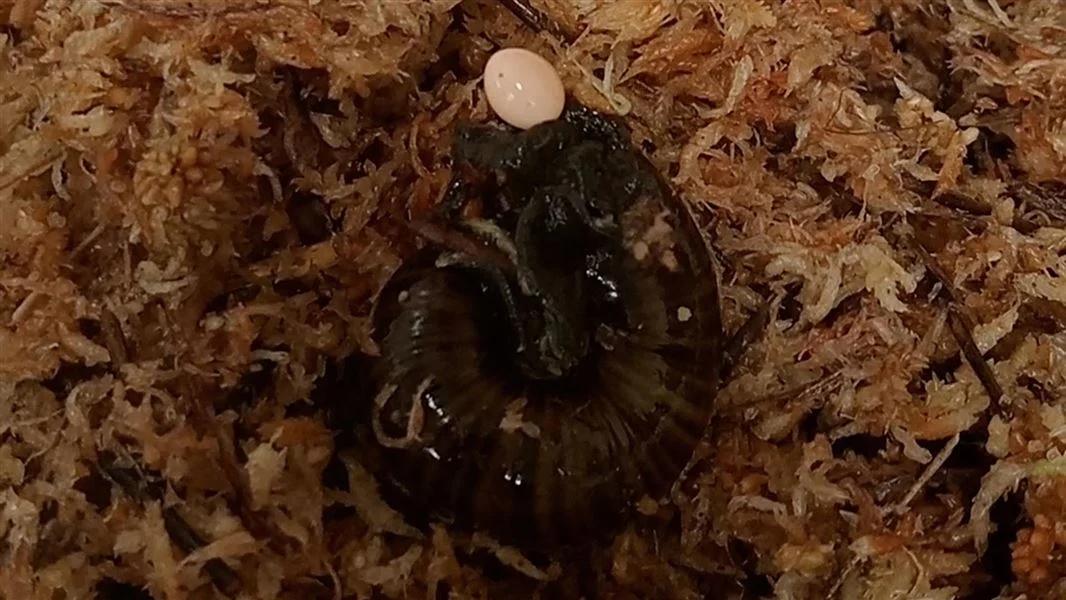For the first time in history, scientists have captured on video a rare carnivorous snail laying an egg from a “genital pore” on its neck.
The footage provides answers to long-standing questions about the reproduction methods of the enigmatic molluscs known as Mount Augustus snails (Powelliphanta augusta).
“Remarkably, in all the time we've been caring for the snails, this is the first time we've witnessed an egg being laid,” Lisa Flanagan, a ranger with the New Zealand Department of Conservation (DOC), who recorded the footage, said in a statement. “We filmed it while we were weighing the snail. We turned it over to weigh it and noticed the egg was just starting to emerge from the snail.”

Like many snails, Powelliphanta are hermaphrodites, meaning they have both male and female reproductive organs.
In the video, you can see a single pearly white egg leaking out of the snail's mucous folds of its neck through an opening called the genital pore.
There are at least 20 species and 59 subspecies of Powelliphanta snails, and they are considered to be among the largest snails in the world, according to the DOC. These snails are nocturnal and rarely appear during the day, except in particularly rainy weather. Therefore, people rarely notice them.
They are also one of the most endangered invertebrate species in New Zealand due to predation and habitat loss.
Found exclusively on the Buller Plateau on New Zealand's west coast, P. augusta is threatened with extinction due to opencast coal mining in its natural habitat, according to DOC.
Due to their declining numbers and nocturnal lifestyle, very little is known about the creatures' life cycle and behavior, so wildlife scientists have been studying the captive population for nearly two decades.
“DOC has been managing this captive population in refrigerated containers in Hokitika since 2006, when mining began in much of their habitat on the west coast of the South Island,” DOC said on Facebook. “Very little was known about this species before they were placed in captivity.”
Like many snails, Powelliphanta are hermaphrodites, meaning they have both male and female reproductive organs. P. augusta is long-lived and slow-maturing, reaching sexual maturity only at age 8, a long time for a snail. Adults typically lay about five eggs a year, which can take more than a year to hatch.
“Some of our captive snails are 25 to 30 years old – the complete opposite of the garden pest snails we introduced to New Zealand. They resemble weeds, producing thousands of offspring each year and having short lives,” DOC senior scientific adviser Kat Walker said in a statement.
While snails' tough shells protect them from predators and harsh conditions, they also make it difficult for sperm to pass between individuals. “Powelliphanta solved this problem by placing the opening (the genital pore) on the right side of the body, just under the head, so the snail only has to peek out of its shell to do its job,” Walker said.
“She withdraws her penis from this pore into her partner's pore, and her partner does the same, simultaneously exchanging sperm, which they can store until they each fertilize the sperm they received to form eggs,” Walker added.
She also noted that since snails have both male and female reproductive organs, they can also self-fertilize.
Laying eggs through the genital opening is common among various snail species, although some species, such as Littorina saxatilis in the UK, give birth to live young. However, Powelliphanta species are unusual in that they lay only one egg at a time, unlike the large clutches of eggs produced by many
Sourse: www.livescience.com





